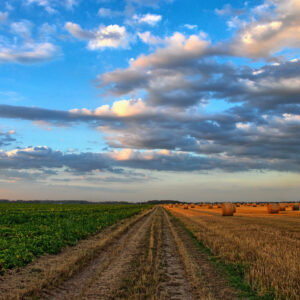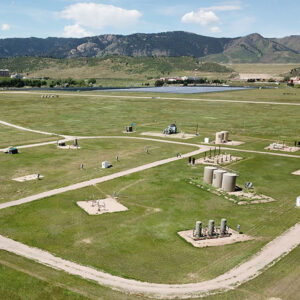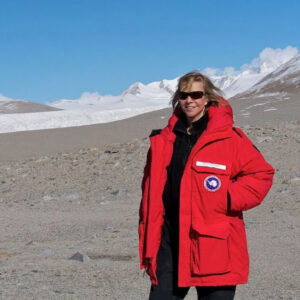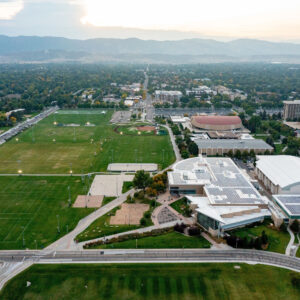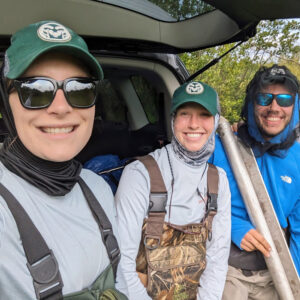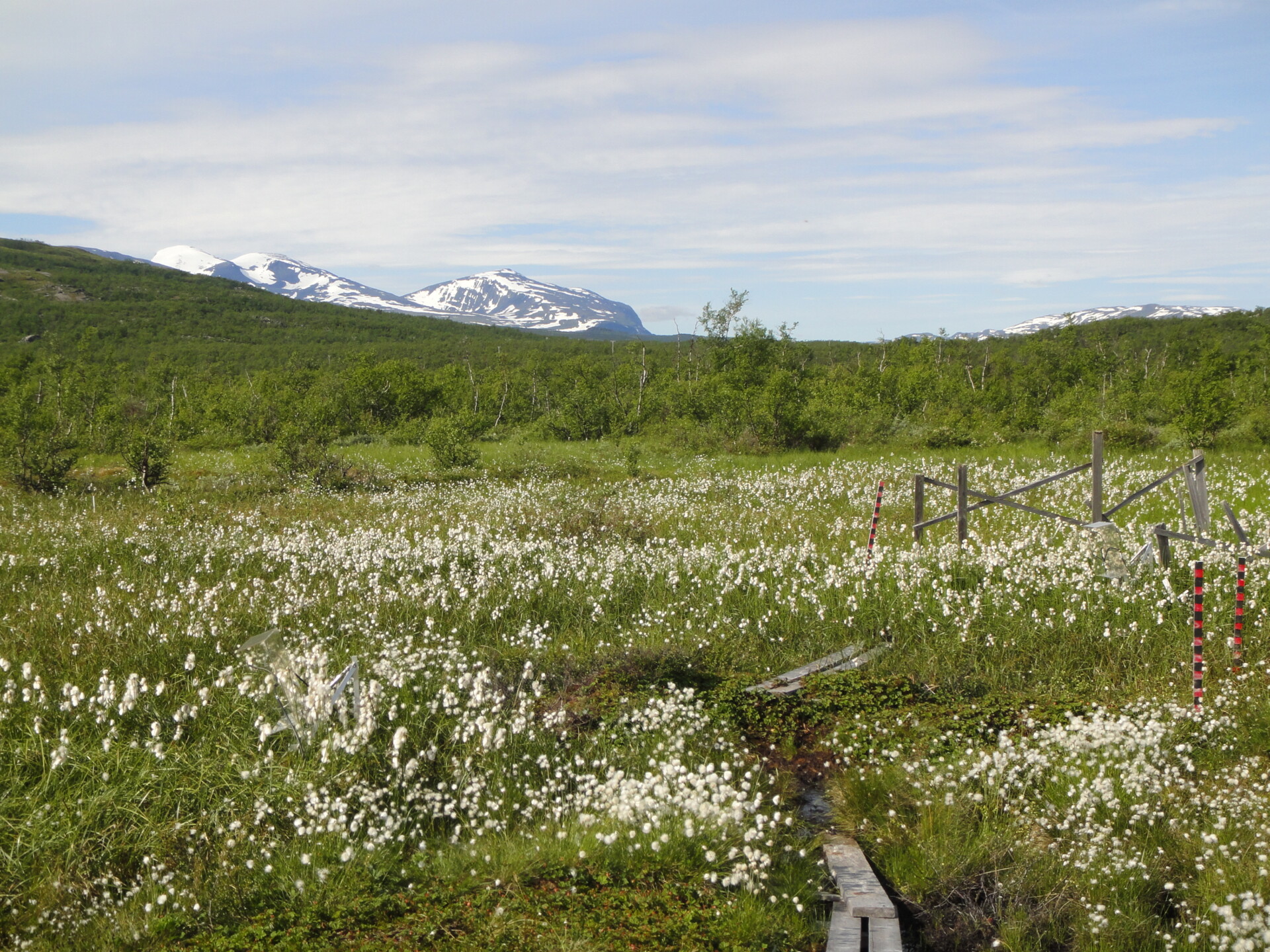
Soils, oceans and the guts of cattle
Talking microbiome science and climate change with
CSU’s Kelly Wrighton
story by Christopher Outcalt
published April 11, 2024
The term microbiome refers to a collection of microorganisms present in a particular environment. A few decades ago, scientists didn’t know very much about these microbes — exactly where or what they were or what roles they might play in any given ecosystem. More recently, though, researchers have begun to unlock a deeper understanding of the diversity and significance of microorganisms. Turns out, microbes have all kinds of important functions — in the guts of humans and cattle, in the frozen arctic tundra and in the oceans.
Colorado State University is recognized as an international leader in microbiome science, particularly in fields related to climate change. Researchers are examining questions related to wildfires, biofuels, the energy and gas sector, and disease ecology in animals and crops. Department of Soil and Crop Sciences Professor Kelly Wrighton runs a lab focused on enhancing soil health, improving our ability to predict greenhouse gas emissions and better cataloging microbiomes that are still not well understood. Wrighton also serves as the co-director of the CSU Microbiome Network, which integrates microbiome research and teaching within multiple disciplines across campus.
“In the past, we may have oversimplified what microbes are capable of,” said Wrighton, a Bishop endowed professor, “and so now we’re in this almost renaissance of microbiome science.”
Can you talk a little bit about your lab’s work?
A lot of the work my lab does is trying to see whether the assumptions we’ve been making about microbes as a scientific community actually hold up on a field scale — and is it consistent with the idea that microbes are these fast metabolic engines? That’s all part of refining our understanding of microbes in the era we live in today. We can see a lot of what the microbes can do. Now it’s: Can we make sense of it? Can we appreciate the microbes for the engines that they are?
When did this latest interest in microbiome science begin?
I think we started to realize there’s more to this world than we understood probably in 2012. The science is still by and large looking at a lot of patterns and observation and reevaluation. It hasn’t yet become quite as explicit as I think people thought it would. But I think we’re starting to get past that. Now we’re in a space where I really feel this huge responsibility as a microbiome scientist to do something revolutionary with all this insight.
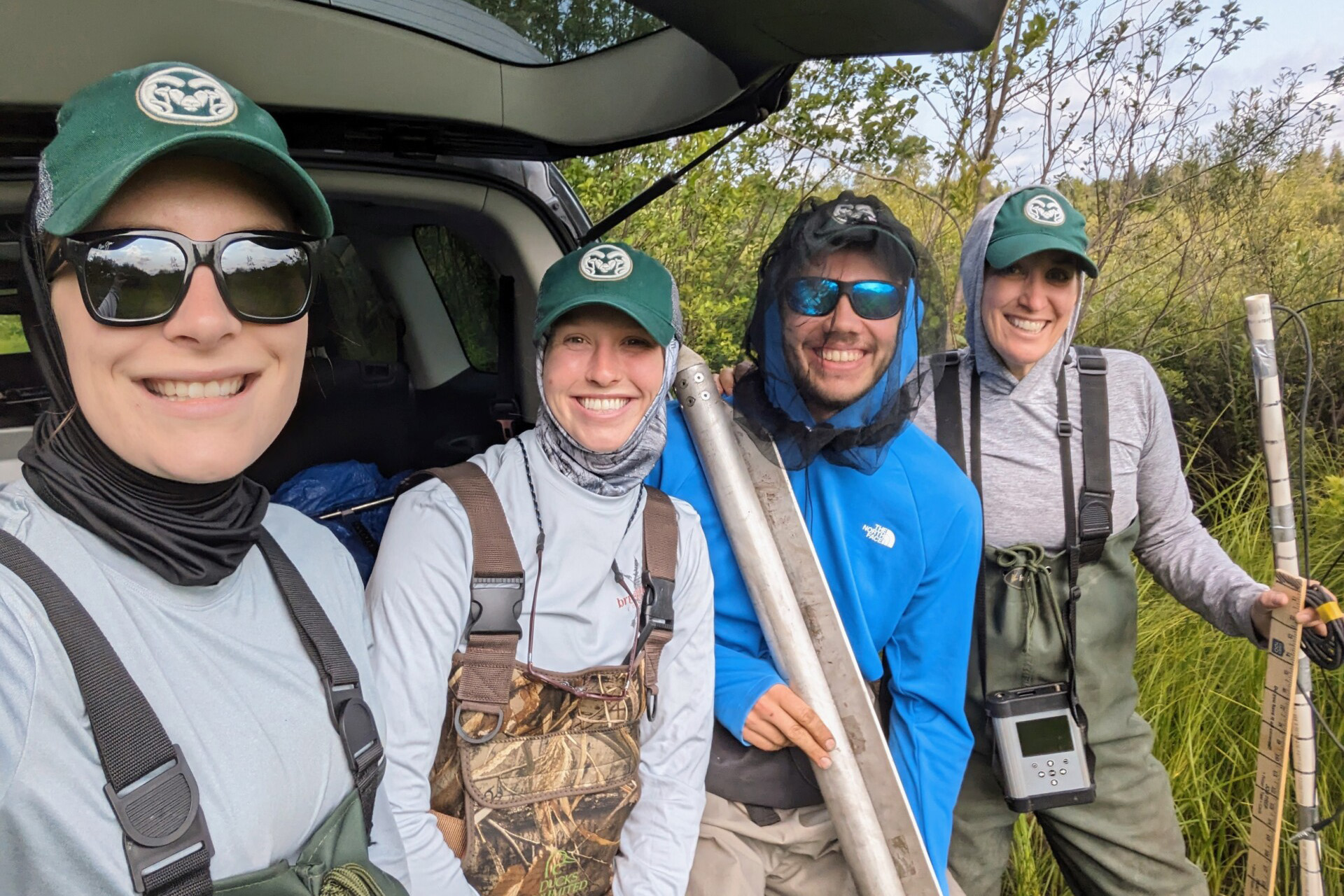
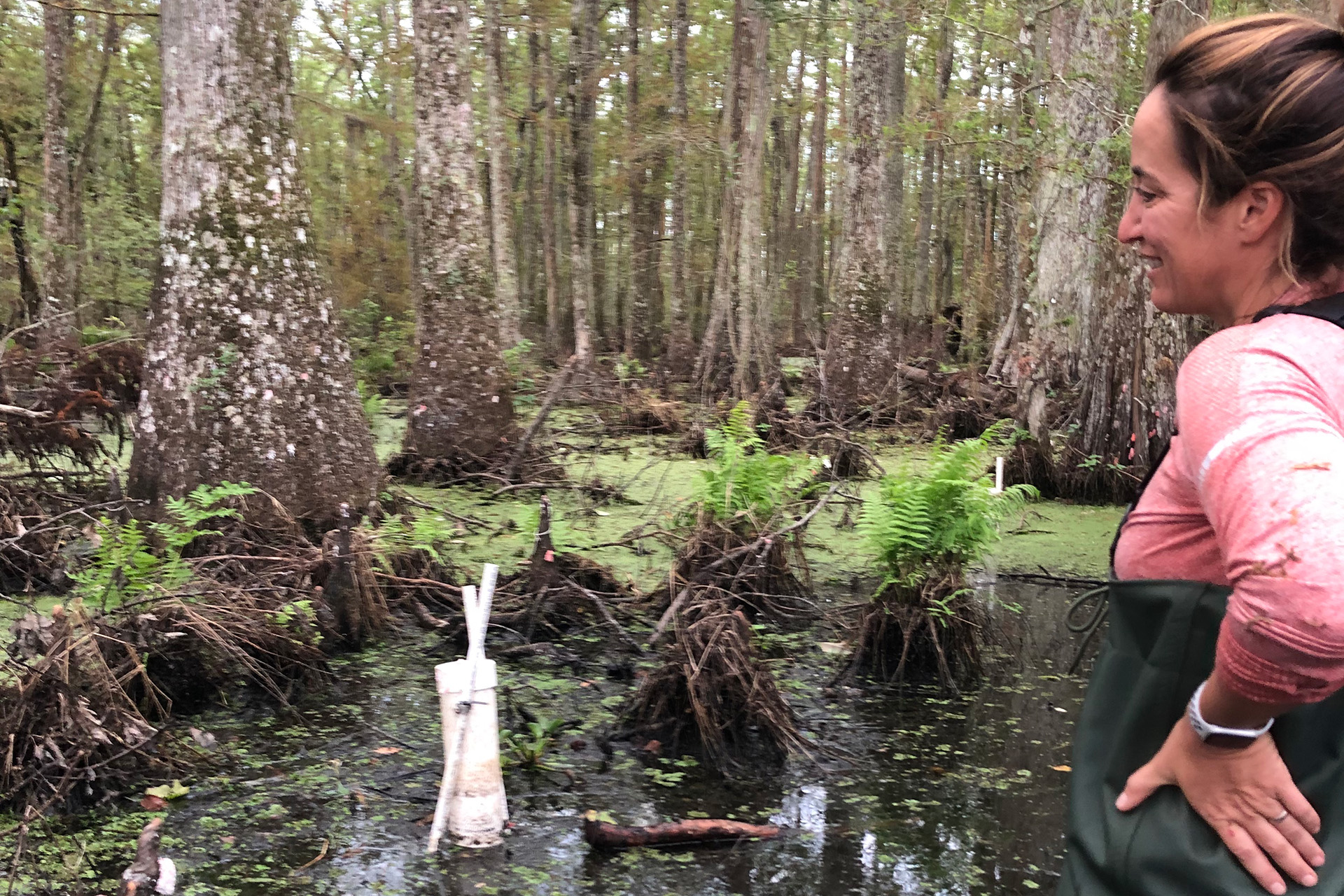
When you think about doing something revolutionary, are you thinking about climate change?
Yes, for me. My lab looks at methane. In general, greenhouse gases are kind of a focus area in terms of production and consumption from microbes. We’re trying to contextualize microbes in terms of permafrost and rumen [the stomach compartment in animals such as cattle that contains the microorganisms responsible for digestion and the part of the animal where methane is produced].
But it goes beyond that. There’s also this part about microbes and their hosts — the environment that the hosts exist in are changing. And it turns out how well organisms adapt to their changing environment could come back to their microbiomes. There’s this idea that our gut microbiomes and skin microbiomes have this buffering capacity that allows organisms to adapt. There’s also disease resistance; viral loads are going up because of warming, and there’s this question of whether a microbiome can confer resistance over time to disease.
So, my interest is on the greenhouse gas consumption and production side, but there are these really cool spaces that other folks are interested in too. We’re living this experiment right now, right? So, it’s a young field in that sense. But there are all these dimensions of the microbiome that we’re starting to appreciate when we talk about a changing climate.
What’s the goal of your work and microbiome science more broadly? Where is this work all headed?
The goal is engineered solutions — there are just so many dimensions of it. I generally work on the side of microbes as engines. They put out these greenhouse gases, and they consume these greenhouse gases, and if we understand that metabolic circuitry — whether it’s in the permafrost or in the rumen — then we can discuss how to quantify it better or how to control it.
I’d really like to get past this kind of thinking that this is too complicated to understand and get to a place where we can accurately reflect the biochemical diversity and the nuance of the environment and how it controls what microbes produce. The whole point is to build a better predictive understanding so that we can have a framework and a chassis that we can manipulate. But the only way we’re going to get there is if we actually understand how something works.
Is microbiome science already reshaping some of the questions researchers ask related to climate change?
I think so. But it’s a balance. As someone who is in the field, I want to be careful not to make it a panacea. We’re doing a lot of work in agricultural systems — trying to come up with new indicators of health. When we think about soil health, we can measure organic carbon or we can measure other features, but those are all derived from microbes. So, there’s this idea that microbes might be these canaries in the coal mine — and if we could unlock and decode them, we might be able to predict the resiliency or outcome of an ecosystem at an earlier stage. We’re trying to build that infrastructure now.
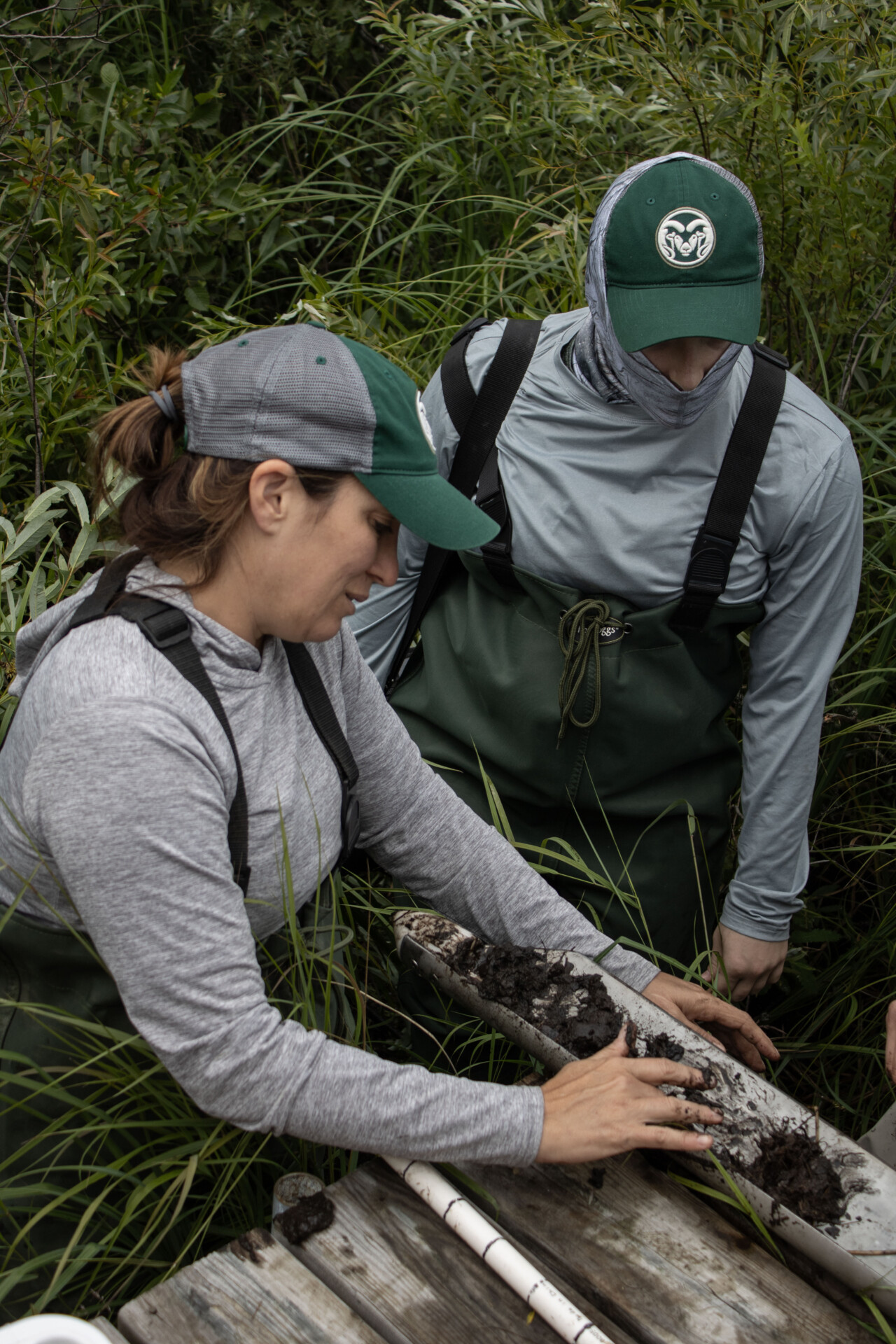
What are the exciting things you think we’ll see in the next five years as far as microbiome science contributing to climate change solutions?
I definitely think we’re going to see microbiome interventions in the rumen in the next five years, whether they’re diet or chemical or biological. I also think there’s a lot of interest in reprogramming soils to enhance sequestration. A lot of these systems store a huge amount of carbon already, like grasslands. Two-thirds of the land on this planet is grasslands, and a third of the carbon is in that system — so, how do we keep more of it in that system? But I think that’s 10 years. What the rumen has that makes it so special is they have 30 years of amazing physiology work; they’ve done the hard mechanistic work. We’re just developing that with soils.
People who work in marine systems understand marine microbes. But I don’t think that’s permeated the news yet. My mom understands the permafrost is thawing; my mom is not aware that marine microbes produce 50 percent of the oxygen on this planet. These land plants, they get all the credit! But microbes are out there in marine systems performing the same role as the plants, but they’re single cells. With oceans warming, animals dying, and animals ranges being extended, I think there will be a greater appreciation for the role microbes can play in terms of producing solutions in that space.
It sounds like there’s a lot of opportunity there.
We really are trying to change the narrative in climate microbiology. I’d like to move past this assumption that it’s a black box. How can we engineer anything if we don’t understand the underlying wiring and plumbing? I think that will lead to better solutions. I’m trying to be deliberate about the spaces we go after. But I’m super excited.
